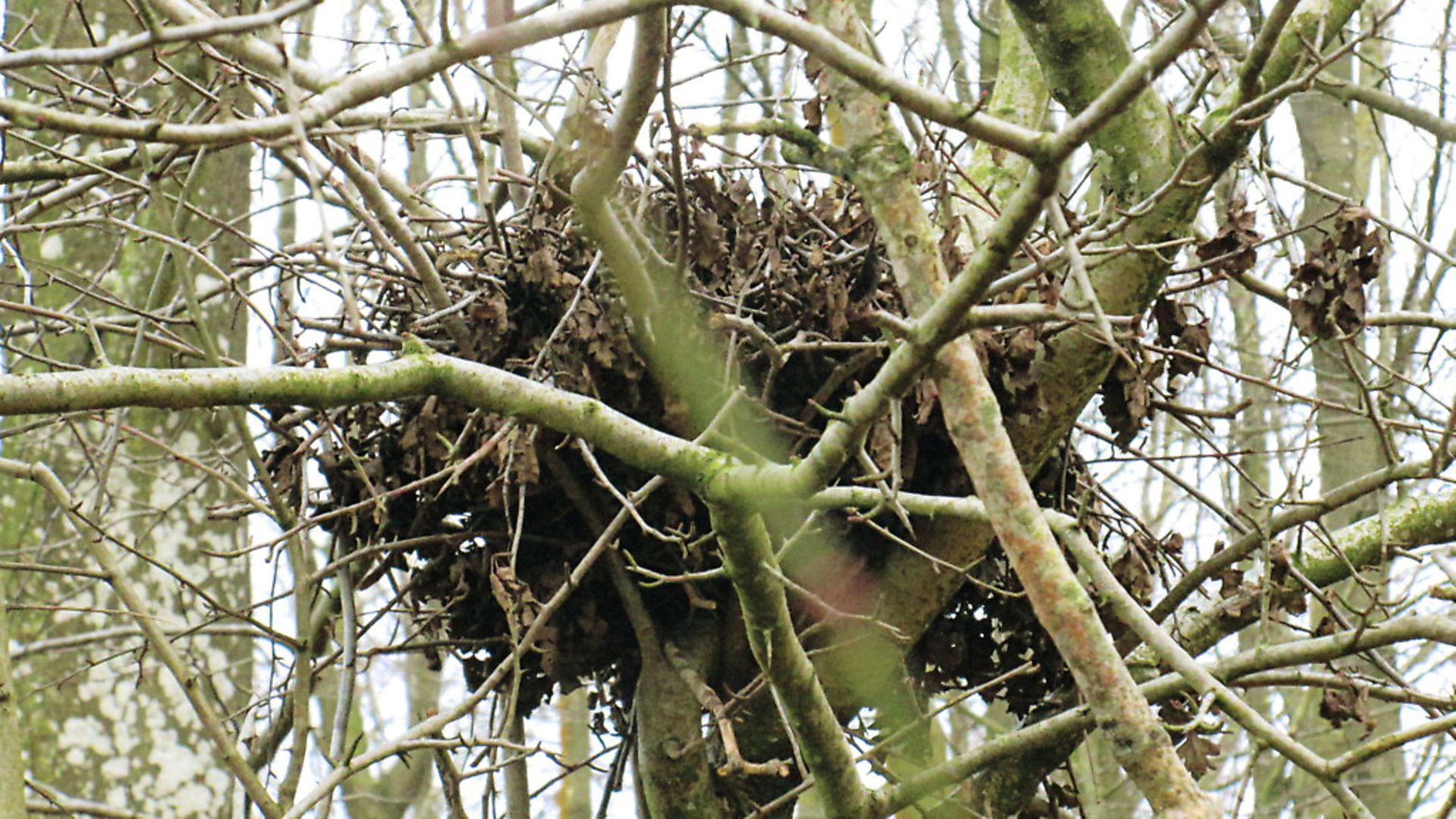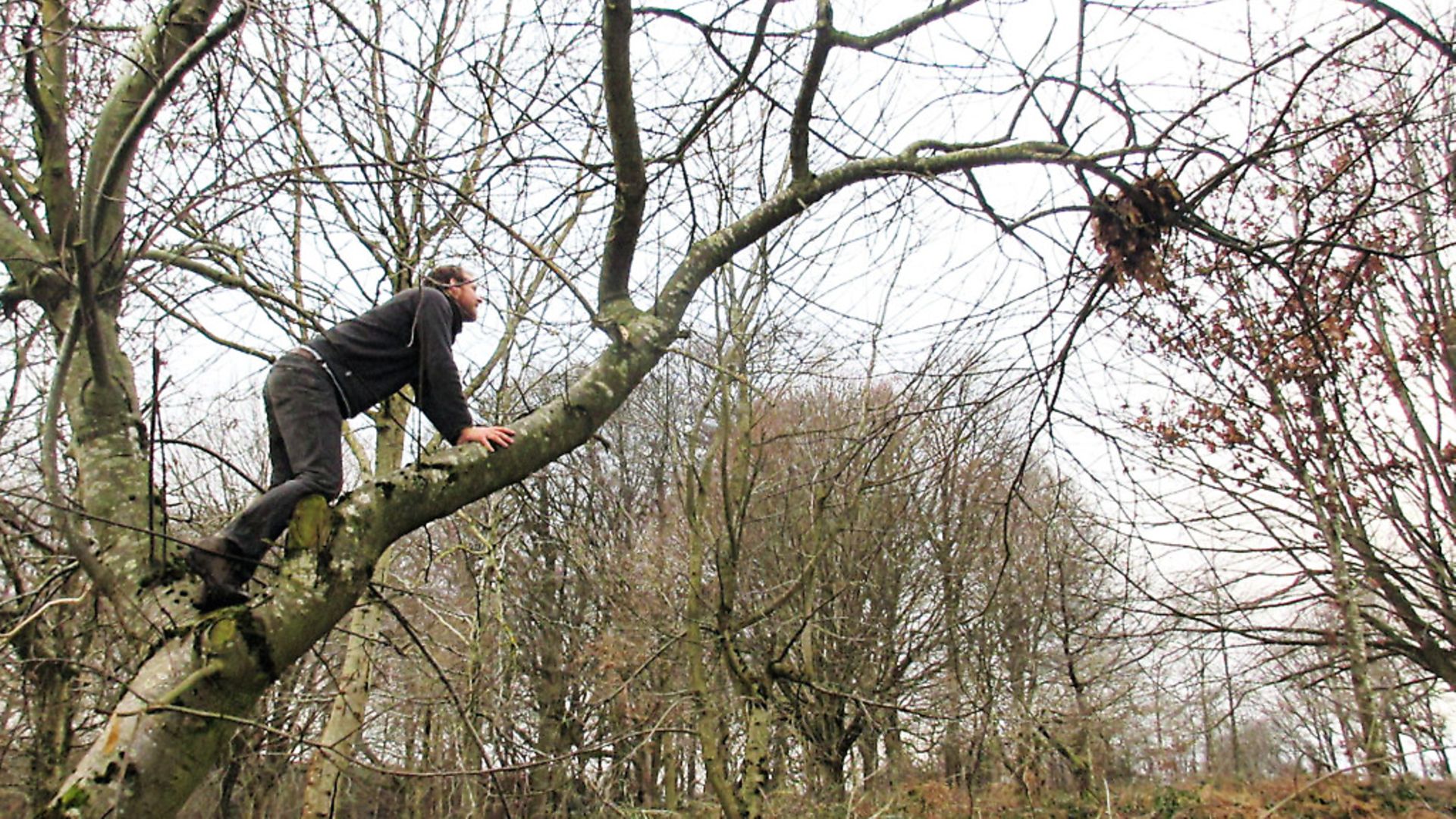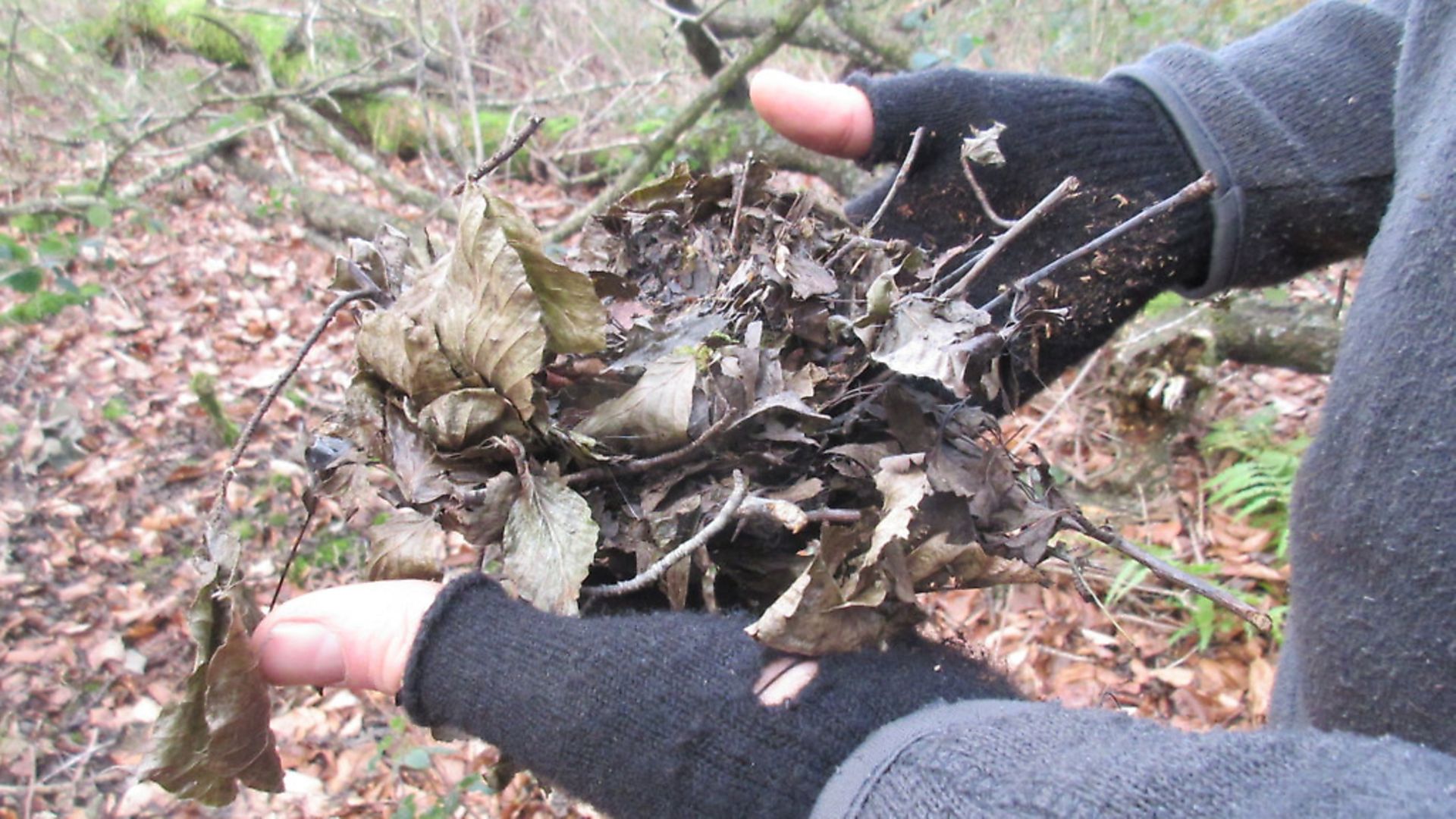Charlie Portlock takes a long, hard look at sorting out squirrels
 credit: Archant
credit: Archant
I was recently invited to a rough shoot on a neighbour’s farm, and in the early part of the day we found ourselves trudging noisily down a strip of woodland some 60 yards wide, shotguns at the ready. The area was south-facing, well-lit and home to a good mix of old hazel coppice, mature oak and ash trees; an ideal place for squirrels. As we entered the wood, one of my fellow guns expressed some regret that we’d likely not see many grey tails because they’d bagged four the previous week. He was right. We did flush one wily creature who seemed reluctant to gain any height at all, possibly aware of how little cover there was to be found aloft among the barren branches, and he went to ground and stayed there. The dogs couldn’t find him and part of me wished him luck.
My respect soon turned to sympathy as my fellow guns vented their frustration by unloading both barrels into the nearest ‘squirrel nest’. This continued for around 150 yards, leaving the smell of powder in the air and a bad taste in my mouth. Undoubtedly, most of the five or six ‘nests’ that absorbed the shot had been dreys, but not all of them. One looked like an old crow’s nest, and another lower down in some hazel and completely barren of leaves could have been that of a jay. Even though it wasn’t nesting season for birds (March 1st – July 31st) or breeding season for squirrels (Jan – April), it felt a bit off. I’ve seen it done several times before on walked up days, and although I understand the logic, for me it’s not quite cricket.
For squirrel shooting, the air rifle is undoubtedly the more sporting choice and allows for a much more considered approach. Although some of the shotgun crowd can look down their noses a bit at air rifles, I tend to think that my Weihrauch is often the refined choice, with success being more dependent upon stealth and fieldcraft than technical skill alone. It’s also much easier to appreciate the natural world when moving slowly and quietly than it is when blundering around with a 12 bore. The whole episode got me thinking a bit more about dreys, how to identify them and how we might be able to use them to inform our fieldcraft.
 credit: Archant
credit: Archant
Look up
Whenever we enter a new woodland permission, it pays to look firstly for the kinds of habitat that won’t hold resident squirrels. We want to be looking in the right areas and beginning our search from the nodal point of the home range, the drey. Squirrels will always emerge from and return to these areas ,so if you’re planning an ambush then they’re a good place to start. Although low shrubs, hazel coppice and hedgerows might hold valuable calories, they’re not places that will hold dreys. Open grassland, areas devoid of nut-producing trees and isolated mature broadleaves in the middle of pasture will be similarly devoid of squirrels. Plantation conifer woods of one or two species, like Corsican or Scots pine, will hold one or fewer squirrels per 2.5 acres (one hectare). Compare that to broadleaved oak and hazel woodland, which can hold upwards of seven or more animals per acre (see Gurnell et al Practical techniques for surveying and monitoring squirrels, 2009).
 credit: Archant
credit: Archant
Count me in
One further way to estimate squirrel numbers roughly is by drey counting. This is a great way to gauge activity on your first walk about, but is also a fun game to play with children or friends whenever you’re in the winter woods. I’ve found that shifting my attention and focus away from the animal in favour of its nest can really help to appreciate its wider habitat and behaviours. This method won’t work in the more verdant seasons, or in conifer woodland where your line of sight will be hampered by foliage.
Dreys are more than 50cm in diameter and more than 30cm deep, and are built close to the main trunk of a tree with support from at least one side branch. One squirrel might use more than one drey, and occasionally, they will share a sleeping space, presumably for warmth in extremis.
Dreys generally occur at heights of more than three metres and they’ll always be roughly oval in shape. Unlike most bird’s nests, they’re completely covered to provide protection from the rain – magpies also build oval, waterproof nests. It can be difficult to discern the dome-like structure from the ground, but a dead giveaway will be the abundant presence of leaves. No other tree-dwelling creature in the UK makes such a sizeable nest of leaves.
 credit: Archant
credit: Archant
Greys will also readily make dens within the trunks of oak trees and these are accessed by a tell-tale smooth hole more than 5cm wide, but as these are difficult to identify with certainty, it’s best to note their location and leave them out of your final count. There will also be open-topped, summer sleeping platforms dotted about and although these are made by single animals in addition to the drey, I count them anyway because it’s not easy to tell the difference between an old, occasionally used drey and a sleeping platform. If dreys are very ragged and you can see daylight through them, don’t count them.
For broadleaved woodland there will be roughly four dreys for every three squirrels, so divide your total drey count by 1.3 for a rough estimate of numbers. Another method is to multiply the number of dreys per hectare by 0.74. If you go to www.mapdevelopers.com/area_finder.php, you can search for your permission by post code and then draw in a search area of one hectare. Make a note of this on an OS map and walk it the next time you’re out. At the very least, you’ll be impressing the landowner with your dedicated approach.
Within range
Male squirrels have a foraging range of roughly eight acres and females around six – an acre is the size of a football pitch. That’s quite an area, although it will vary with the season and squirrels will stay closer to their dreys during the summer. The majority of the broadleaved woodlands that we shoot are unlikely to stretch to this size unbroken, but you can combine the various patches and make rough estimates of the numbers that your ground will hold provided they’re connected by enough cover. I’ve never seen squirrels move more than 60 yards from the treeline. They seem to cross roads happily enough, but due to perceived threats from aerial or ground predators, it seems highly probable that they’ll only venture within sprinting distance of tree cover.
Drey in, drey out
If you ever have the chance to look inside a drey, or to deconstruct one, you’ll begin to understand why squirrels might be reluctant to leave its protection during inclement weather. They’re astonishingly well-built, thermally insulated and completely waterproof, being constructed in layers from twigs, compressed leaf litter, moss and the squirrel’s own hair. Squirrels are famous for late mornings and when you consider that their nests are warm, quiet and pitch black, you can understand why it might sometimes be more energy efficient to stay indoors. The drey’s thickness must also insulate the occupants from noise, and one wonders if the cautious hunter might be able to approach it unheeded, lying in wait for the sun to warm the nest enough to motivate its residents to leave.
Woods for the trees
If you’re controlling greys for forestry purposes, then it can be useful to have a rough target number in your head so that when the landowner asks you how you’re getting on, you can give them an informed and knowledgeable answer; ‘Based on my drey count and my observations so far, this wood has a carrying capacity of around X squirrels’ etc. If you’re shooting the right numbers then you’re on target, and if you’re not having much luck then at least you know why; either there aren’t likely to be that many (pine plantation) or you’re not seeing them because your fieldcraft is a bit rusty.
During my own wanderings, I’ve found drey awareness to be a useful focal point and like foraging, litter picking or nature observation, it can transform even the least fruitful foray into a success story. Fieldcraft begins with observation and that doesn’t always mean searching for the tail flick or listening for movement. If we can begin to see the wider picture beyond the crosshairs, we’ll certainly be better hunters, but we’ll also be better naturalists too. My best for the field. Charlie.
__________________________________________________
Read more from Charlie Portlock...
Dealing with the dilemmas of permission performance
Secrets of the airgun shooting at dusk
Does the size of the bag define our enjoyment of the hunt?